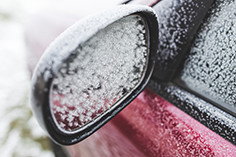According to the US Department of Transportation, more than 1,300 people are killed and over 116,800 are injured each year by auto accidents that occur on snowy, icy, or slushy roads.
Safe winter driving requires an abundance of caution, with defensive driving techniques employed and extra vigilance behind the wheel. Common sense practices — like never using a phone while driving and always wearing a seatbelt — are all the more important, while speeding and aggressive driving are especially
Lorem ipsum dolor sit amet, consectetur adipiscing elit, sed do eiusmod tempor incididunt ut labore et dolore magna aliqua. Quis ipsum suspendisse ultrices gravida. Risus commodo viverra maecenas accumsan lacus vel facilisis.
Dr Tony Bartone said"Calibrate yourself every time you start a drive through bad weather by testing the conditions as you leave the relative safety of your neighborhood or the parking lot," Rogers said. "When traffic is clear and you have room to work, try slowing or stopping as quickly as you can without activating your antilock brakes, for example."
Being an alert, defensive driver while on the road is critical for winter driving safety, but so too are the ways in which you prepare and care for your vehicle during the colder months. Depending on where you live and the types of roads on which you drive, winter driving may call for everything from different tires to different wiper blades to different fluids in the engine.
During the winter, it's also a good idea to stock your car with a few specialty items that can help get you on the road faster first thing or get you out of a jam if you get stuck along the way.


